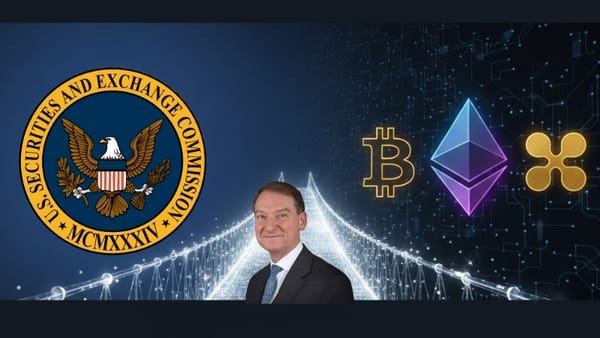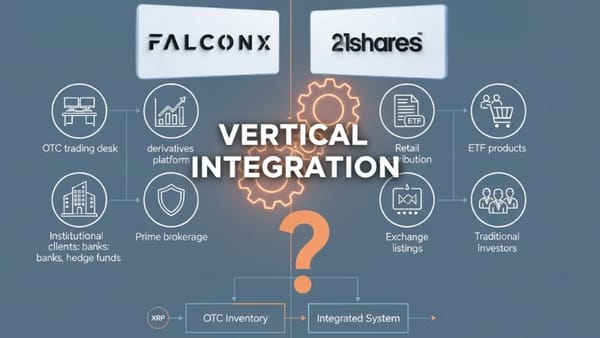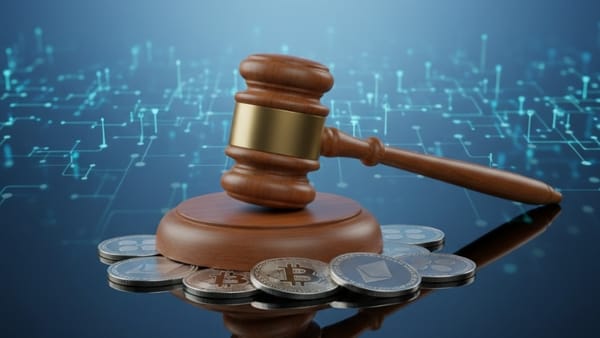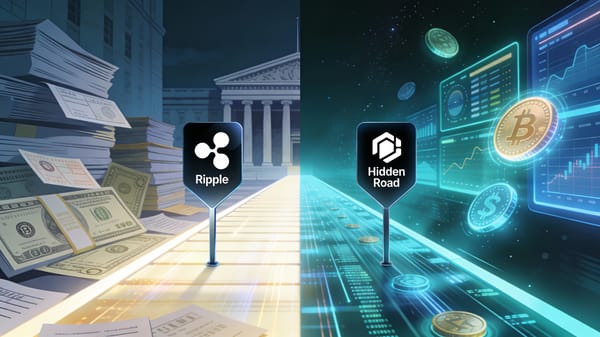Brale Brings Enterprise Stablecoin Platform to XRP Ledger
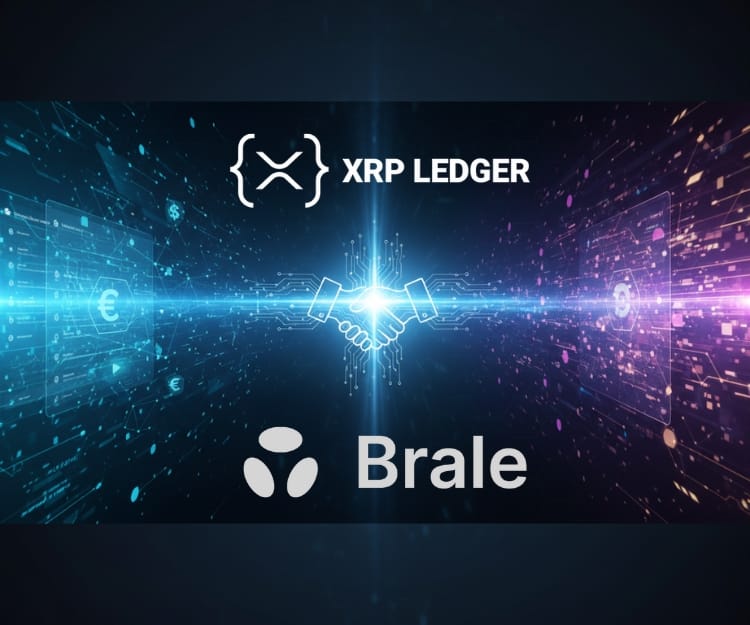
Enterprise stablecoin infrastructure provider Brale has launched on the XRP Ledger, enabling businesses to issue custom stablecoins and access Ripple's RLUSD for seamless settlement. This integration marks a significant expansion of institutional-grade digital asset infrastructure on one of crypto's most efficient payment networks.
Brale, the Des Moines-based fintech company that pioneered simplified stablecoin issuance, has officially integrated with the XRP Ledger (XRPL), bringing its comprehensive stablecoin platform to businesses operating on Ripple's blockchain ecosystem. The move positions XRPL as an increasingly attractive option for enterprises seeking regulated, compliant stablecoin solutions.
What Brale Brings to XRP Ledger
According to recent reports, Brale's platform now allows businesses to issue and manage regulated stablecoins directly on the XRPL through a simple API integration. The platform provides the complete infrastructure stack that enterprises need, including on-ramps, off-ramps, wallet infrastructure for custody, and settlement capabilities.
Perhaps most significantly, Brale's integration includes native support for Ripple USD (RLUSD), Ripple's dollar-backed stablecoin. Companies using Brale can now settle transactions in RLUSD on both the XRP Ledger and Ethereum, creating seamless interoperability between these major blockchain networks.
The platform removes the traditional barriers to stablecoin issuance. What once required $100 million in infrastructure investment and months of regulatory navigation can now be accomplished through Brale's standardized processes. The company claims businesses can launch a compliant, fiat-backed stablecoin in approximately one hour using their interface.
Why This Matters for the Crypto Ecosystem
Brale's expansion to XRPL represents more than just another blockchain integration—it signals growing institutional confidence in the XRP Ledger's capabilities as a payment settlement layer. The XRPL offers several technical advantages that make it attractive for stablecoin operations:
Speed and Cost: The XRPL settles transactions in 3-5 seconds with fees averaging just $0.0002 per transaction, making it dramatically cheaper than traditional wire transfers that can cost $20-50 and take several days.
Scalability: The network processes up to 1,500 transactions per second, providing the throughput necessary for high-volume commercial applications.
Built-in Compliance: Unlike blockchains requiring third-party smart contracts for compliance features, the XRPL includes native functionality for regulatory requirements, reducing security vulnerabilities.
The timing is particularly strategic. RLUSD has scaled to reach $839.6 million in total value across supported chains, demonstrating substantial institutional adoption. Stablecoin market capitalization on the XRPL itself has climbed approximately 37% over the past 30 days to reach nearly $287 million, according to recent market data.
Regulatory Landscape and Market Context
The integration comes amid increasingly favorable regulatory conditions for stablecoins. The GENIUS Act (Guiding and Establishing National Innovation for U.S. Stablecoins), which would create a comprehensive framework for stablecoin regulation, recently passed the Senate and is expected to win House approval. This legislation would legitimize assets like RLUSD and provide clear operational guidelines for stablecoin issuers.
Meanwhile, Ripple's ongoing partnership expansions continue to validate the XRPL ecosystem. Brazilian financial group Braza recently launched two stablecoins on XRPL—BBRL (pegged to the Brazilian Real) and USDB (pegged to the U.S. dollar)—with ambitious targets to capture 30% of Brazil's stablecoin market by the end of 2025. Braza processed over $1 billion in transactions within 24 hours this past April, demonstrating the real-world demand for XRPL-based payment infrastructure.
Additionally, real-world asset (RWA) value on the XRP Ledger increased 4.3% to $364.9 million over the past 30 days, with RWA transfer volume surging approximately 42% in the same period. This activity indicates that tokenized assets are actively moving and settling on the network, not merely parking capital.
XRP and Ripple: Impact Analysis
For XRP holders and Ripple stakeholders, Brale's integration carries several important implications:
Increased Network Utility: Every transaction on the XRPL, regardless of which stablecoin or asset is being transferred, requires XRP for transaction fees. As Brale-facilitated stablecoins gain adoption and transaction volume increases, demand for XRP as the network's native utility token naturally rises. While individual transaction fees are minimal ($0.0002), the cumulative effect of high-volume commercial activity can be significant.
Institutional Validation: Brale's decision to support XRPL alongside Ethereum, Solana, Avalanche, and other major chains signals that sophisticated fintech companies view the XRP Ledger as competitive infrastructure for regulated financial products. This institutional recognition could influence other enterprises evaluating blockchain platforms for payment operations.
RLUSD Ecosystem Expansion: By integrating RLUSD settlement, Brale creates additional utility and liquidity for Ripple's stablecoin. Companies using Brale can now seamlessly move between traditional fiat, various stablecoins, and RLUSD, potentially driving adoption of Ripple's dollar-backed asset. The stablecoin has already demonstrated resilience—during the October 10 crypto flash crash, RLUSD maintained its $1 peg throughout the volatility, validating its stability mechanism.
Competitive Positioning: With multiple major institutions now building stablecoin infrastructure on XRPL (Braza, Brale, and others), the network is establishing itself as a legitimate alternative to Ethereum for tokenized assets and payments. This diversification reduces concentration risk and could attract companies seeking alternatives to congested or expensive blockchains.
Legal and Regulatory Clarity: Ripple's strengthened regulatory position following its partial SEC legal victory in 2023 makes XRPL more attractive for compliance-focused entities like Brale. The platform can confidently build on XRPL knowing the legal framework around XRP as a utility token has improved significantly.
Partnership and Business Development Opportunities
Brale's comprehensive ecosystem integration strategy enhances the value proposition for businesses on XRPL. The platform has established partnerships with leading infrastructure providers including BitGo for qualified custody, Coinflow for fiat on/off-ramps, and Rain Cards for stablecoin spending through Visa networks. These integrations are now available to stablecoins issued on the XRPL through Brale's platform.
For Ripple, Brale represents another arrow in the quiver for attracting enterprises to RippleNet and XRPL. Financial institutions exploring stablecoin strategies can leverage Brale's turnkey solution rather than building infrastructure from scratch, lowering the barrier to XRPL adoption. This aligns with Ripple's stated mission of making cross-border payments more efficient and accessible.
Marcelo Sacomori, CEO of Braza Group, recently predicted that "in five years, there will be no currency exchanges in the world without stablecoins." If this vision materializes, platforms like Brale will be critical infrastructure providers, and their choice of supported blockchains will significantly influence which networks capture this emerging market.
Price Implications and Market Outlook
While infrastructure developments don't translate directly to immediate price movements, they establish fundamental value that can support longer-term appreciation. XRP is currently trading around $2.40, down from its recent highs but still significantly elevated compared to 2023 levels.
Several analysts have offered price projections based on institutional adoption catalysts. Geoffrey Kendrick at Standard Chartered estimates XRP could reach $12.25 within five years, implying annual returns of approximately 36% through 2029. Other conservative estimates suggest XRP could triple to around $9 over the next decade as stablecoin adoption and potential ETF approvals boost demand.
The key near-term catalyst remains the SEC's decisions on multiple XRP spot ETF applications from Grayscale, Bitwise, Canary, WisdomTree, and CoinShares, with deadlines falling in late October 2025. ETF approval could unlock significant institutional capital inflows, similar to what occurred with Bitcoin ETFs in January 2024 (Bitcoin subsequently rose 160%).
However, investors should note that XRP dropped 15% during the October 10 flash crash, demonstrating ongoing volatility. The token has declined more than 25% over the past month as broader crypto market uncertainty persists. Technical analysts note that XRP remains in a consolidation pattern, with critical support around $2.75-$2.80.
Broader Industry Trends
Brale's XRPL integration reflects several macro trends reshaping the digital asset landscape:
Stablecoin Infrastructure as a Service: Rather than every company building proprietary stablecoin technology, specialized platforms like Brale are emerging to provide "stablecoin-as-a-service." This mirrors the evolution of cloud computing and other infrastructure markets.
Multi-Chain Strategy: Leading infrastructure providers are no longer betting on a single blockchain. Brale supports over 10 blockchains, recognizing that different networks serve different use cases and markets. XRPL's inclusion in this portfolio validates its competitive position.
Regulatory Compliance First: Modern stablecoin platforms prioritize regulatory compliance from day one rather than treating it as an afterthought. Brale's licensed money transmitter status and emphasis on reserve management, attestations, and reporting align with the direction of U.S. stablecoin regulation.
Real-World Asset Tokenization: The convergence of stablecoins and tokenized traditional assets (government bonds, real estate, invoices) creates new financial infrastructure possibilities. XRPL's native features for asset tokenization position it well for this trend.
Conclusion: Building the Foundation for Mainstream Adoption
Brale's launch on the XRP Ledger represents incremental but meaningful progress toward institutional adoption of blockchain payment infrastructure. By providing enterprises with turnkey stablecoin issuance capabilities on XRPL, Brale lowers technical and regulatory barriers that have historically limited blockchain adoption in traditional finance.
For XRP and Ripple, the integration reinforces the network's value proposition as a fast, low-cost, compliant settlement layer for digital assets. As stablecoin activity increases on XRPL, network effects compound: more transaction volume burns more XRP, more developers build applications, more institutions take notice, and more capital flows to the ecosystem.
The next 12-18 months will be telling. If regulatory clarity continues improving, ETF approvals materialize, and platforms like Brale successfully onboard enterprise clients to XRPL, the network could establish itself as genuine alternative infrastructure for global payments. Conversely, if adoption remains limited or regulatory headwinds return, the infrastructure buildout may prove premature.
What's certain is that Brale's integration provides another tool for businesses exploring stablecoin strategies. Whether that translates to meaningful XRP appreciation depends on execution, market conditions, and the pace of institutional adoption—variables that remain dynamic and uncertain.
Key Takeaways
- Brale launched on XRP Ledger, enabling businesses to issue regulated stablecoins and settle in RLUSD through a simple API
- XRPL's technical advantages—3-5 second settlement, $0.0002 fees, 1,500 TPS—make it competitive for payment operations
- Stablecoin market cap on XRPL surged 37% in 30 days to nearly $287 million, signaling growing adoption
- Regulatory environment improving with GENIUS Act expected to pass, creating clear stablecoin framework
- XRP benefits from increased network utility as stablecoin transactions require XRP for fees
- Multiple XRP ETF decisions pending in late October, potentially unlocking institutional capital
- Price outlook remains uncertain with XRP at $2.40 amid market volatility, though infrastructure developments support long-term value
Sources
- U.Today - SBI XRP Treasury Investment
- Ripple Official - Braza BBRL Launch
- Ripple Official - Braza USDB Launch
- Brale Official Website
- Solana Compass - Brale Platform Overview
- CB Insights - Brale Company Profile
- The Motley Fool - XRP Market Analysis
- The Motley Fool - XRP Flash Crash Analysis
- The Motley Fool - XRP Price Prediction
- Ventureburn - XRP Price Prediction 2025-2030
- Messari - State of XRP Ledger Q1 2025
- XRPL.org - XRP Ledger Official Site
- CoinDesk - Evernorth XRP Treasury
- Bitcoinist - Ripple RLUSD NYSE Transaction
- Trade Finance Global - Braza USDB Launch
DISCLAIMER: This newsletter is for informational purposes only and does not constitute investment advice, advertising, or a recommendation to buy, sell, or hold any securities. This content is not sponsored by or affiliated with any of the mentioned entities. Investments in cryptocurrencies or other financial assets carry significant risks, including the potential for total loss, extreme volatility, and regulatory uncertainty. Past performance is not indicative of future results. Always consult a qualified financial professional and conduct thorough research before making any investment decisions.
